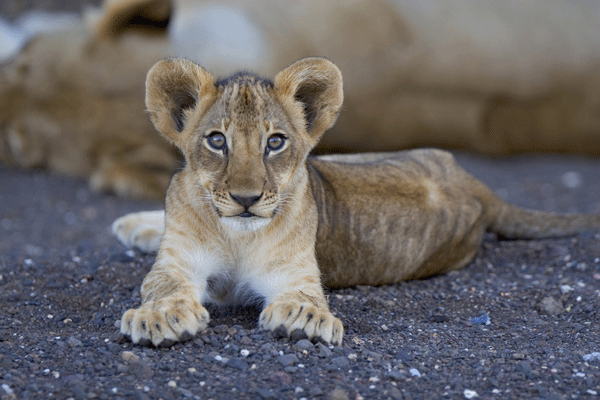After the introduction of three individuals and two prominent prides, the series of the Dune Kings is coming to an end. Professor Fritz Eloff established emotional connections with the lions and alliances mentioned in previous instalments of this series; all of which were written about in the form of a tribute to the life and hardships of these particularly powerful characters. Having spent the thirty year length of time in the Kalahari Desert, it would have been expected that the lions and lionesses Eloff identified and tracked were to reach the end of their ten to twelve year old lifespans; making the articles written about them sad, yet powerful conclusions to their fighting lives. I was surprised to read the final chapter of Eloff’s Hunters of the Dunes and find myself warming with delight and cooing with adoration for little lion cubs who did not die tragic deaths at the claws of a dominant male or the bite of a black-backed jackal; but who fought to survive despite the traumatic separation from their mothers. I found this conclusion to a string of stories about tough desert hunters a poignant reflection of life and rebirth in the African animal kingdom, and how that begins with the strength and resilience of its youngsters. This is an account of A Young Kalahari Hero.
The watering holes in the south of Botswana’s Kalahari Desert were reliable locations for lion-spotting, as the animals of the dune kingdom rely heavily on the provision of water at these pools. Between Loffiesdraai and Dankbaar watering holes, Eloff and his team came across a small pride led by two lionesses and three young cubs of around 12 months old. After four days following this maternal group, they were approached by two nomadic males; possibly the males belonging to the duo dubbed The Alliance. A flourishing skirmish took place that night, and as the ferocious felines had it out, the three youngsters must have scattered in fear, as when the lionesses were spotted the following day, they were anxiously calling their cubs who were nowhere to be seen. After a year of life, these cubs would have been accustomed to their mother’s nurturing sound, eagerly listening out to find their way home after a separation. One of the triplets who had fled the scene the night before did not re-join his family, as his siblings did, and it was sadly assumed that he had wandered too far.
A highly debated subject amongst the public is that of compassion versus naturalism. Eloff, in his ambition to study the behaviour of the lions of the Kalahari, bore witness to many accounts of savagery and barbarism amongst his wild subjects, but it was never his place to intervene, as the nature of his research was purely observational. One would have thought this made it difficult when the trackers in the team recounted the third cub’s paw prints, discovering he was still very much alive and roaming aimlessly around the desert, undoubtedly mewling for his mother. Surprisingly still, it was revealed (also by the expert interpretation of tracks) that the youngster joined up with the two brutes who had instigated the brawl that separated him from his family. This association didn’t last long – perhaps the cub was not welcome with the big boys – and a set of diminutive paws set off, once again, alone. Tracking both parties, Eloff was able to determine that where the cub collapsed that night, exhausted, was sixteen kilometres from where his mother and brothers were resting. Hungry and disorientated, this still-suckling cub was a far distance from home.

Over the next forty eight hours, it was with hope that the team observed the little lion’s movements as he navigated the dunes. He seemed to be acting on instinct, as he managed to locate the place he had been separated from the pride and the very waterhole his mother had drank at mere hours before. It is believed that each party was determinedly searching for the other; a nugget of optimism in this difficult separation. Eloff recorded that at different times both the pride and the lone cub returned to the place they were last joined as a family, which lit a lantern of hope in the hearts of the researchers.
Ultimately, after trials and tribulations, an excited abundance of lion prints in the sand painted a picture of reunion. The team was not there to witness the family greeting one another, but the joyous performance of five lions was evident in the red sand, and the content trail of mothers and sons was traced in the direction of their local watering hole.
For an opportunity to see the Dune Kings, contact us to book your stay at Haina Kalahari Lodge, or for a tailor-made safari through the Kgalagadi booked in at Rooiputs, Union’s End and Polentswa lodges.
By Chloe Cooper




